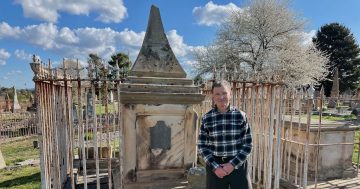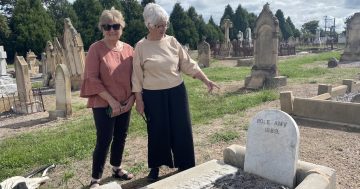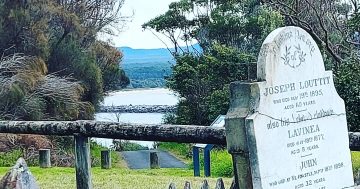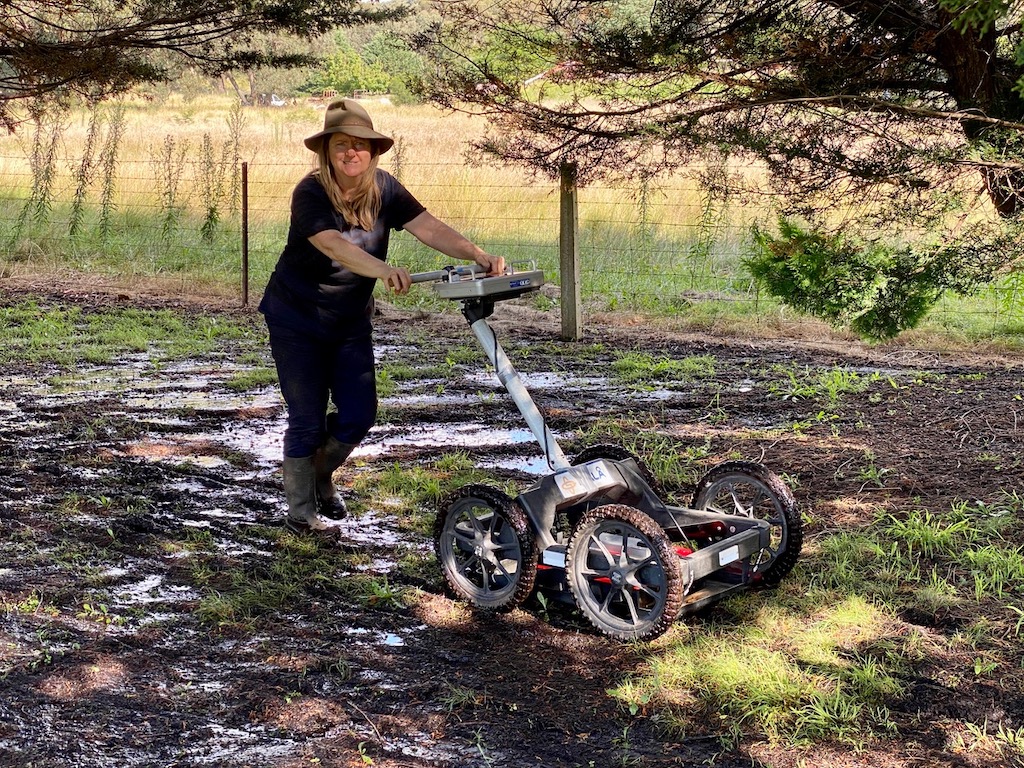
Forensics specialist Louise Steding using ground-penetrating radar at Goulburn’s old Jewish Cemetery. Photo: Cold Case.
Cold Case, a team of specialists with criminology, archaeology and imaging skills, is helping locate graves using ground-penetrating radar at Goulburn’s old Jewish Cemetery.
Cold Case co-founder Louise Steding said the GPR technology was becoming more sought after to solve cases of missing people. Cold Case was a last resort that helped find Matthew Leveson, who disappeared in 2007 in Sydney. His skeletal remains were found in the Royal National Park south of Sydney in 2017.
As well as burial and possible burial sites, the radar survey gave a better picture of the size of the caretaker’s cottage at the 1800s cemetery, fences and paths over which coffins were carried to graves.
Cemetery trustee and research coordinator Gary Luke said 30 burials had been researched and verified through death certificates and other records. Only about 11 graves were marked with a headstone or partially broken headstone. About 11 or 12 are certain grave locations, about another 16 are highly ones, and 17 others are possible burials, or tree roots from the past. In total, there are 44 possible burial sites.
Aside from the radar technology, much painstaking research is clearing up misinformation about the historic cemetery, according to Gary, who in retirement from theatre production pursues genealogy and history research and was involved with the Jewish Historical Society.
Now on the National Trust’s cemeteries committee and involved with the national Australian database of all Jewish burials in Australia, he has completed multiple cross-section research of all sorts of likely records to establish who is buried in Goulburn.
“Trove newspaper records have been a boon in the identity of 30 graves. I have done a lot of searches on Trove using various combinations of key words and then looked up other records to verify things I have found,” Gary said.
“With that extra dozen (possible burials) I went back on to the births, deaths and marriages putting in various typical Jewish surnames of that period and looking for other deaths in Goulburn.
“Then I eliminated some that I knew died in Goulburn but had been buried at Rookwood (Sydney) or elsewhere. Some others from the names and families, I recognised that no, they were not Jewish after all – Abrahams, Moses, Isaacs – there are a lot of Irish and Welsh with the same surnames.
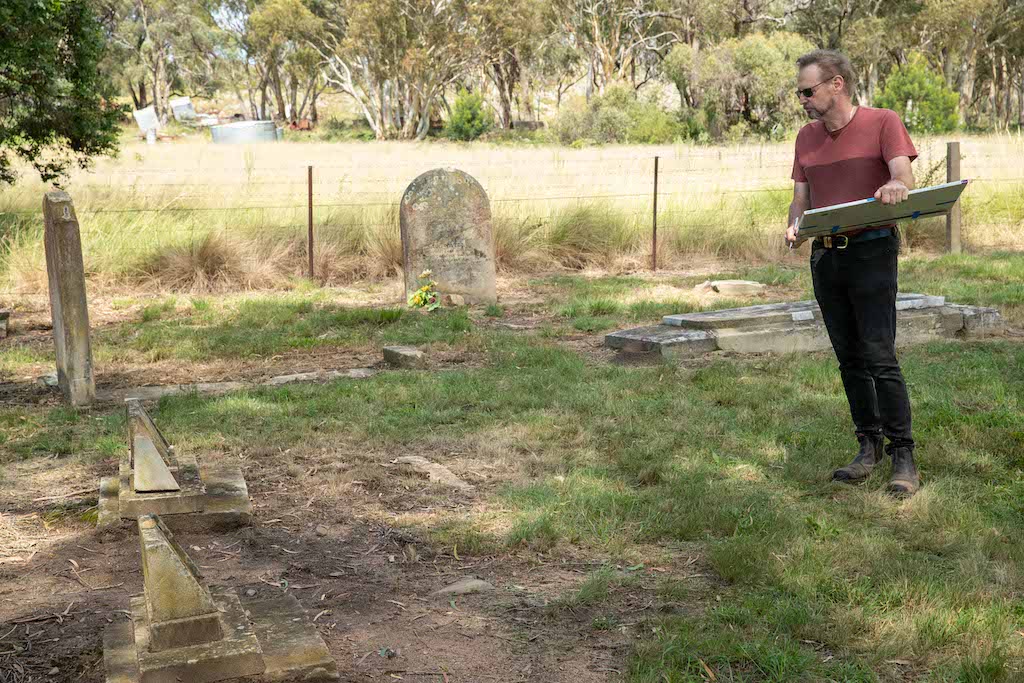
Visualisation specialist Gerald Steding looks over headstones at Goulburn’s 1800s Jewish Cemetery, where more likely gravesites have been found. Photo: Cold Case.
“It came down to four that I thought might be likely. I sent away and received death certificate transcriptions and found one who was Jewish but is buried at Rookwood, although died at Goulburn; the other three are Catholic and Anglican.”
The scope of research reflects the international and national standards Gary is applying to the historic cemetery. Such care was not always applied.
“In the 1930s there were proposals from Jewish organisations to shift the headstones to Rookwood in Sydney and sell the property,” Gary said. “Imagine if that had happened, there would have been less than a dozen headstones, nothing more known about the cemetery and no chance of our new technology being able to make further discoveries.”
He said restoring to some degree or at least conserving how a site is at any time keeps it in context, giving a chance of understanding it in another way.
A previous restoration attempt in 1987 focused on beautifying the cemetery to show respect. Trees were planted, rocks from the ruins were shifted and much of the cemetery’s fabric was totally changed.
“They erected a cairn of stones and a brass plaque in 1987 with what they thought were the names of burials,” Gary said. “Many names are missed, and there are a number of names on there that are in error, that are not Jewish and buried elsewhere or one or two were Jewish and buried in Yass and Rookwood. One person at least never existed.”
The Goulburn Post reported the cemetery was established in about 1844 following the drowning death of John and Rebecca Moses’ two daughters in the Yass River.
The Jewish Times reported in 1987 the graves included the first Jewish woman to be married in Australia, Rebecca Moses, who died on 8 January, 1854, aged 46. The last graves belonged to two German wartime migrants who died in 1943.
A demonstration of the GPR equipment and explanation of the discoveries at the historic Jewish Cemetery, 118 Long Street, Goulburn, will be held on 6 November from 11 am to 1 pm. For more information, email: [email protected].



